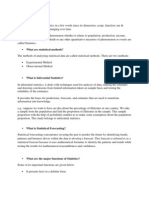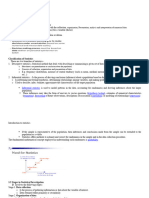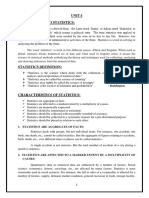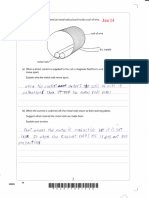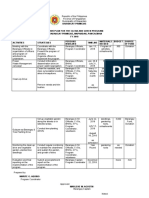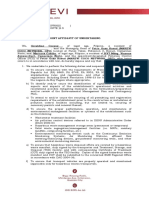0% found this document useful (0 votes)
9 views6 pagesQA Notes
The document provides an extensive overview of statistical representation of data, covering definitions, types of data, applications in various fields, limitations, methods of data collection, and presentation techniques. It emphasizes the importance of statistics in economics, business management, and industry, while also detailing the classification and frequency distribution of data. Additionally, it discusses the representation of sets and their properties, highlighting the foundational concepts in statistics and mathematics.
Uploaded by
bgmiemulator15112000Copyright
© © All Rights Reserved
We take content rights seriously. If you suspect this is your content, claim it here.
Available Formats
Download as DOCX, PDF, TXT or read online on Scribd
0% found this document useful (0 votes)
9 views6 pagesQA Notes
The document provides an extensive overview of statistical representation of data, covering definitions, types of data, applications in various fields, limitations, methods of data collection, and presentation techniques. It emphasizes the importance of statistics in economics, business management, and industry, while also detailing the classification and frequency distribution of data. Additionally, it discusses the representation of sets and their properties, highlighting the foundational concepts in statistics and mathematics.
Uploaded by
bgmiemulator15112000Copyright
© © All Rights Reserved
We take content rights seriously. If you suspect this is your content, claim it here.
Available Formats
Download as DOCX, PDF, TXT or read online on Scribd
/ 6






















